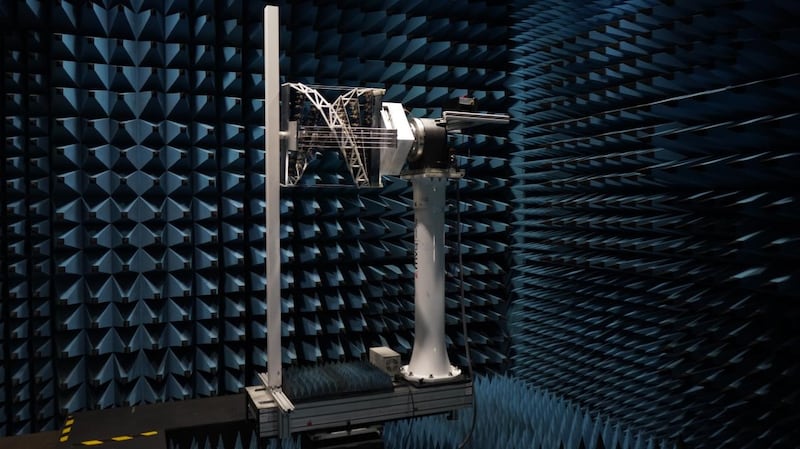Plans to harvest solar power in space using satellites to produce a potentially endless supply of clean energy have taken a big leap forward with Irish scientists making a key breakthrough on how to deploy the technology.
Specially constructed satellites could gather energy from the sun and relay it back to Earth via microwave beams 24 hours a day, seven days a week, according to research from Queen’s University Belfast.
A prototype, developed with UK company Space Solar Ltd, has been successfully demonstrated in a world-first at Queen’s Centre for Wireless Innovation (CWI).
The benefit of locating a solar farm in space, as opposed to on Earth, is that it could provide continuous energy in all weather, says lead researcher Dr Neil Buchanan.
Death of Pope Francis - live updates: Funeral to take place on Saturday as mourners gather
Chief medical officer Mary Horgan: ‘People often forget how bad infections were; our memories sometimes are short’
Owen Doyle: Chaotic cock-up cost Munster and it reflects badly on a number of people
Dublin-born Irish–American cardinal Kevin Farrell to run Vatican until pope elected
The economics work, experts say, because a solar panel in space produces more than a dozen times the amount of renewable energy than the same panel on Earth. This is because of the greater light intensity, caused by absence of clouds, atmosphere and “night time”.
Space Solar estimates each satellite, with an antenna measuring 2km in diameter, could provide 2 gigawatts of continuous power – enough to power one million homes on Earth.
Plans are in train for the technology to be scaled up, Dr Buchanan said, with a target of trials in space by 2030 with the possibility of power being sent to Earth at scale in a decade.
Within half an hour of being switched on, it was working. We were pretty elated
— Dr Neil Buchanan
The partnership predicts several hundred satellites could ultimately be launched, with each requiring more than 60 rocket flights and automated installation, resulting in a substantial proportion of global energy needs being met.
The fundamental research for this aspect of the technology has been more than 10 years in development at CWI. One of the biggest challenges has been inventing a satellite capable of constantly facing the sun and perpetually orbiting moving objects, while also being able to beam power back to a fixed point on Earth.
Space Solar’s power satellite design, known as CASSIOPEIA, provides a uniquely capable solution “with a solid state power-beaming architecture, with ability to steer the beam through 360 degrees”.
A prototype satellite measuring a half-metre in diameter and containing more than 150 individual antennas has successfully undergone testing within CWI’s anechoic chamber, which offers a controlled test environment and mimics the conditions 20,000 miles above Earth. Further simulations will be carried out next year at CWI to fine-tune the technology and begin scaling it up, Dr Buchanan added.

“Within half an hour of being switched on, it was working. We were pretty elated,” he said. “The technology will undoubtedly require a high, initial investment. Sending rockets into space is obviously pretty expensive although the price has come down significantly in the past decade.
“Once the satellites are up and running, however, they will immediately start to generate substantial amounts of revenue. As well as providing a viable business model, this should have a massively beneficial environmental impact, providing a sustainable source of clean, safe energy into the future.”
Martin Soltau, co-chief executive of Solar Space, said: “In just six months, we have delivered this world-first demonstration of 360 degrees power-beam steering, which is a core requirement for the operational power satellite. We look forward to building on this successful project as we scale up the technology together. Space-based solar power can help deliver the energy transition with reliable, affordable energy from space.”
The team also designed a type of “cross-helical antenna array structure” to beam the energy over long distances and a high-efficiency, microwave-energy transmitter.













